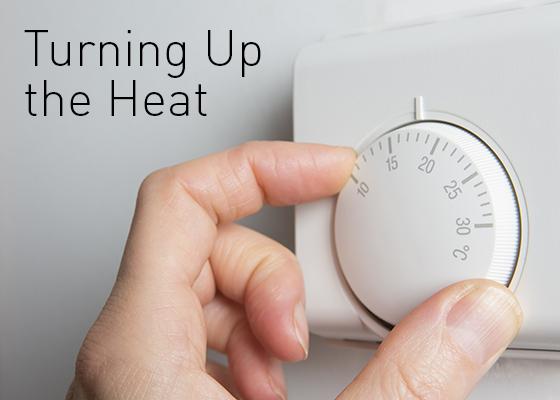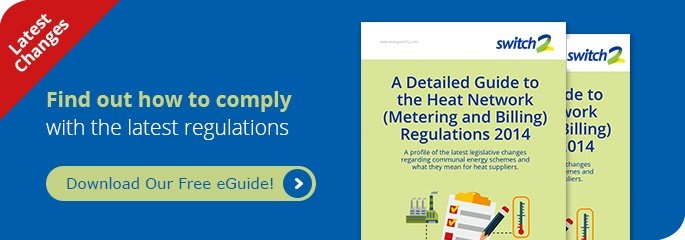
A welcome extension before the “duty to notify” comes into force as part of the Heat Network (Metering and Billing) Regulations 2014. But heat suppliers, including Housing Associations and Developers, still need to gear up for the new responsibilities this month and a more regulated environment on the horizon.
Turning Up The Heat
The extension last month on the duty for heat suppliers of all communal and district heating systems to notify the National Measurement and Regulations Office (NMRO) has been welcomed by the industry. But providers still face new responsibilities this month and cannot afford to take their eye off the ball.
The change is part of the Heat Network (Metering and Billing) Regulations 2014, announced last December to impose major duties on Heat Suppliers operating heat networks regarding the notification of certain information about heating or cooling systems, the installation of meters and standards for billing of these services.
The duty on suppliers to notify NMRO - the enforcement body for the Heat Network Regulations - has now been postponed to 31st December 2015 under the amended regulations.
However, heat suppliers do still need to comply with the following changes before 30 April:
Metering - The duty to install point of entry meters for buildings with one or more customers connected to a district heat network and final customer meters in new buildings with more than one customer connected to community heating or a district heat network. Heating suppliers should also note that there is still a duty to retrofit final customer meters by the end of 2016. Although the benefits are clear there is an optional opt out if the scheme operators can show that fitting them is not technically or economically feasible. However, this test must be re-applied every 4 years
Billing - End customers must be billed using actual meter readings (rather than estimates) at least once a year. Anyone requesting electronic billing should be invoiced quarterly. Bills must contain current energy prices, details of total consumption (compared to the previous year if applicable) and general information on how to improve energy efficiency.
Failure to comply with any part of the new regulations may lead to a range of civil and criminal sanctions.
The news to delay Notification has been warmly welcomed by industry insiders including Hodgkinson, a specialist energy and environmental consultancy for planning and development, which said:
“This will be welcomed by developers who face civil and/or criminal penalties if they do not declare relevant details of all instances where they act as heating or cooling suppliers to residents. The previous deadline of April 30th 2015 was deemed to be unrealistic.”
This latest announcement is one more in a series of changes that are coming into play for the maturing district heating sector.
Last month we reported the introduction of the Heat Trust, a major new initiative to protect the interests of householders and micro businesses connected to heat networks. Kirsty Lambert, Director of ENER-G Switch2 commented: “As district heating schemes expand across the UK, it is essential to embed best practice and ensure that customers have trust and confidence in the service. We are proud to be a founding member of the Heat Trust and to commit to maintaining exemplary standards in providing metering and billing services to the communal heating sector.”
Elsewhere, Which? has recently published a new report, Turning up the heat: Getting a fair deal for District Heating users to explore the future of district heating and how the sector can lead change and improvement.
Following focus groups, telephone interviews, and price comparisons of more than 50 schemes supplying heat to around 87,000 households, the authors argue:
- Better reporting is urgently needed
- Complaints handling must be improved
- Government must ensure all consumers are effectively protected
- Suppliers must be more transparent on pricing
- A review of fair pricing for district heating customers is needed
In our view, this analysis and upcoming regulation are very positive developments for the community heating industry. Not only will they lead to improvements that benefit existing residents on community heating schemes, they also lay the ground for a stronger future.
Around 210,000 UK households are currently connected to district heat networks with the Government predicting this could rise to eight million by 2030. This expansion is being driven by the UK’s carbon reduction targets as these networks may help reduce emissions by using waste heat from industrial processes or low carbon fuel sources such as biomass or waste.
Over half (55%) of the current schemes are in London, including developments such as Highbury Square, East Village in the Olympic Park, Greenwich Square and Royal Arsenal Riverside.


